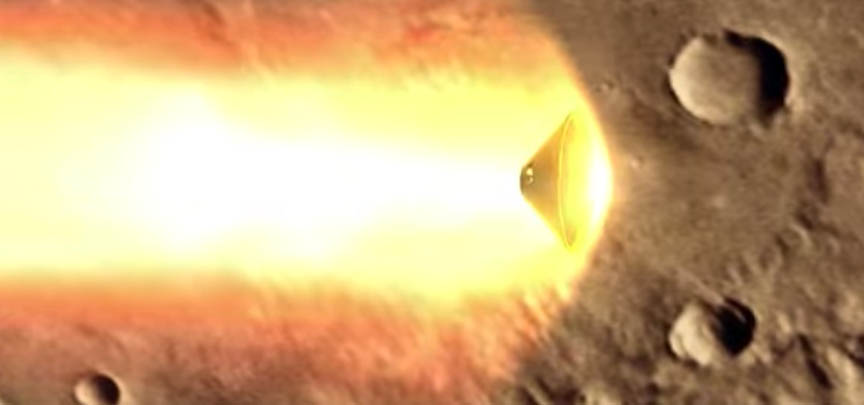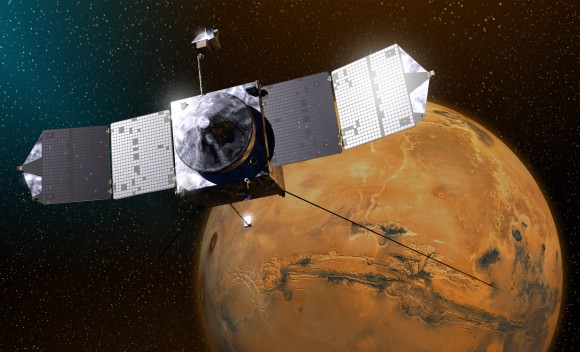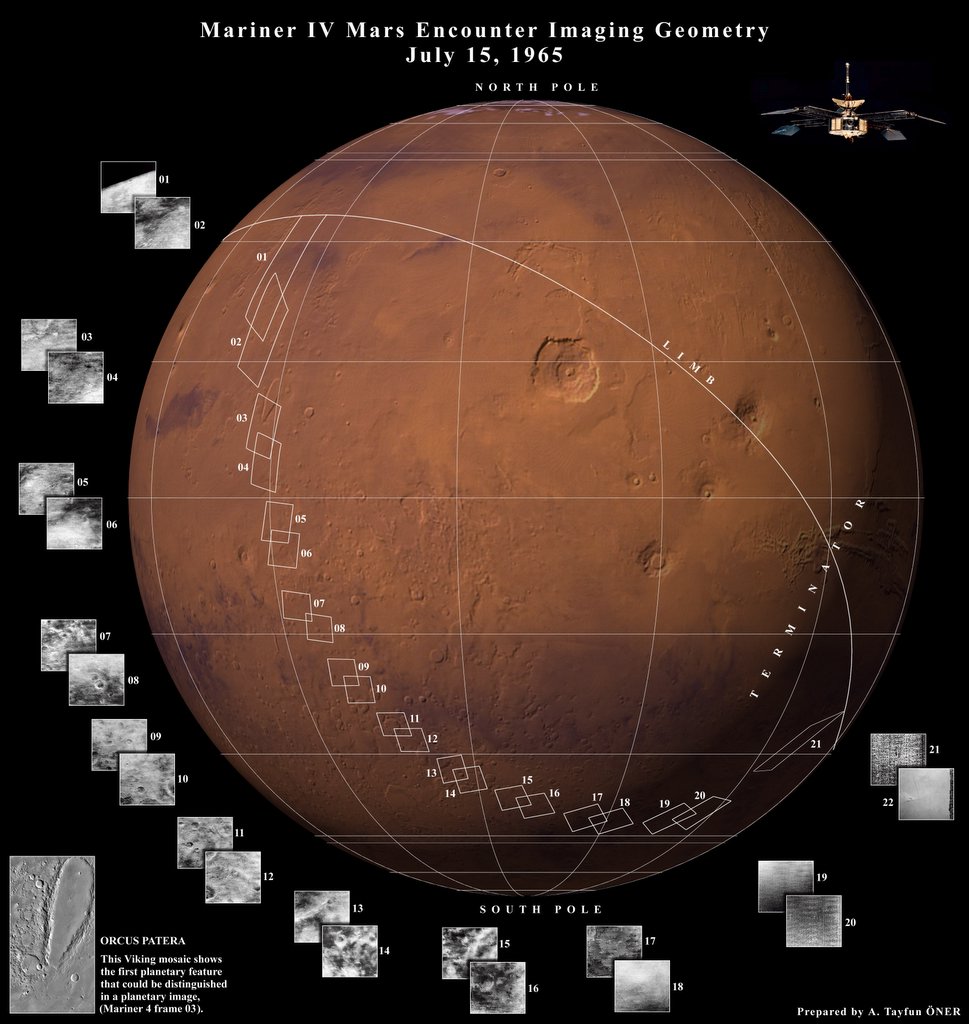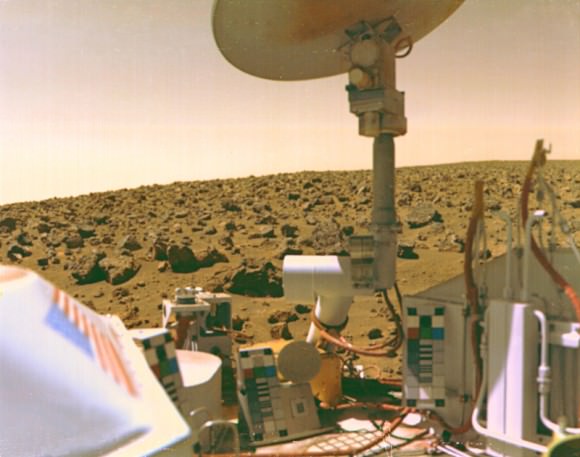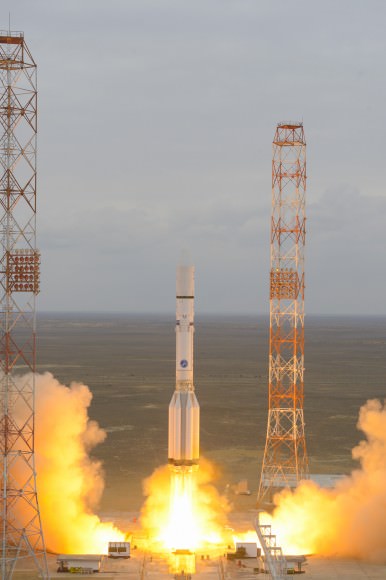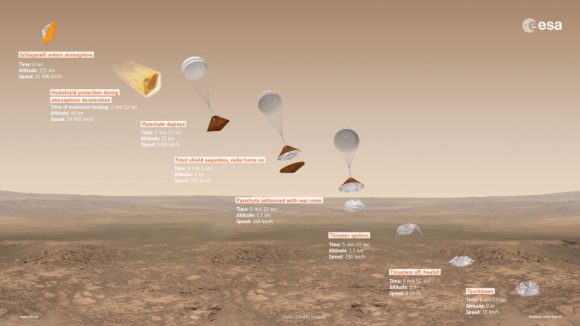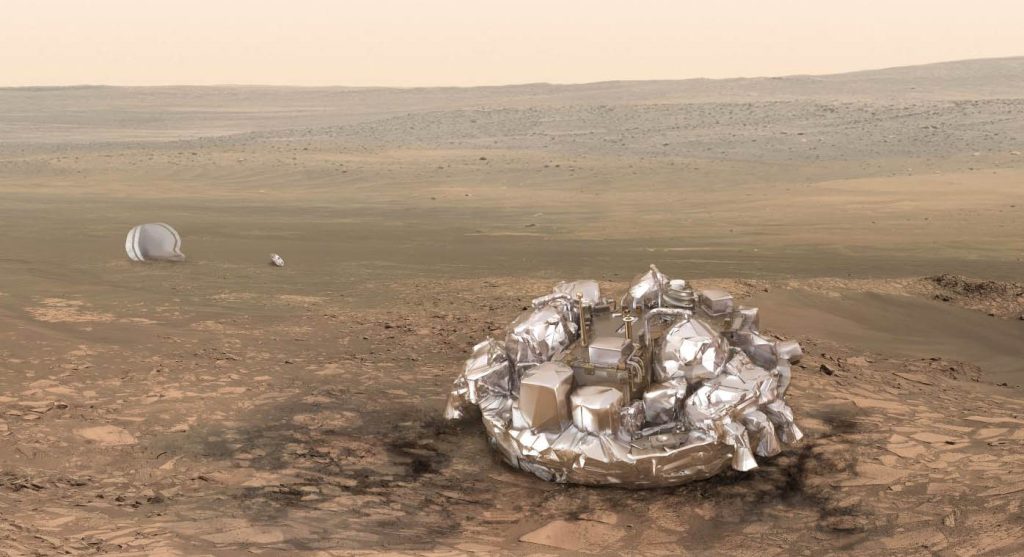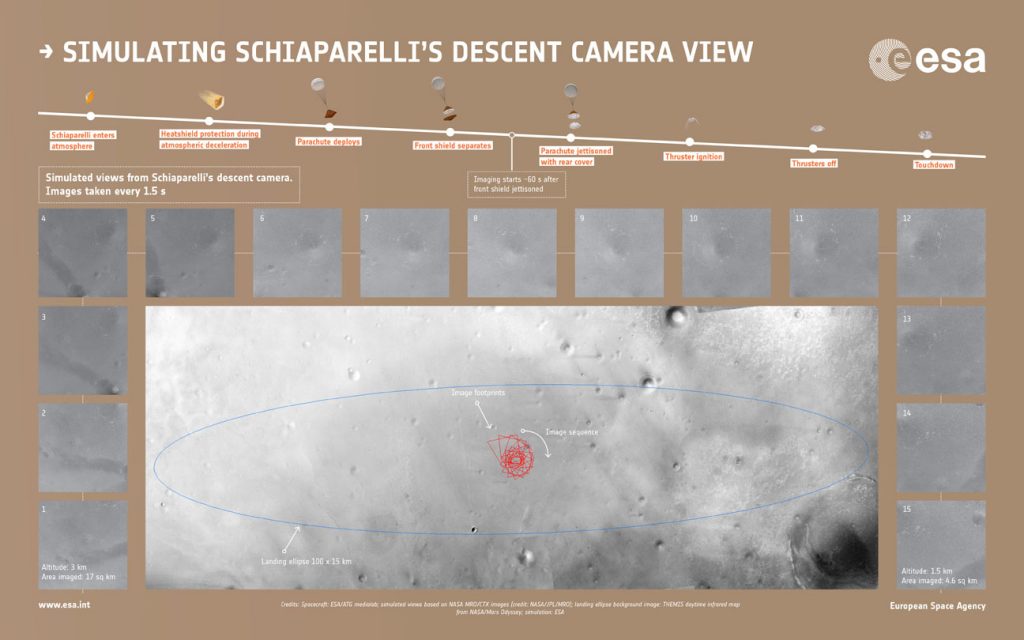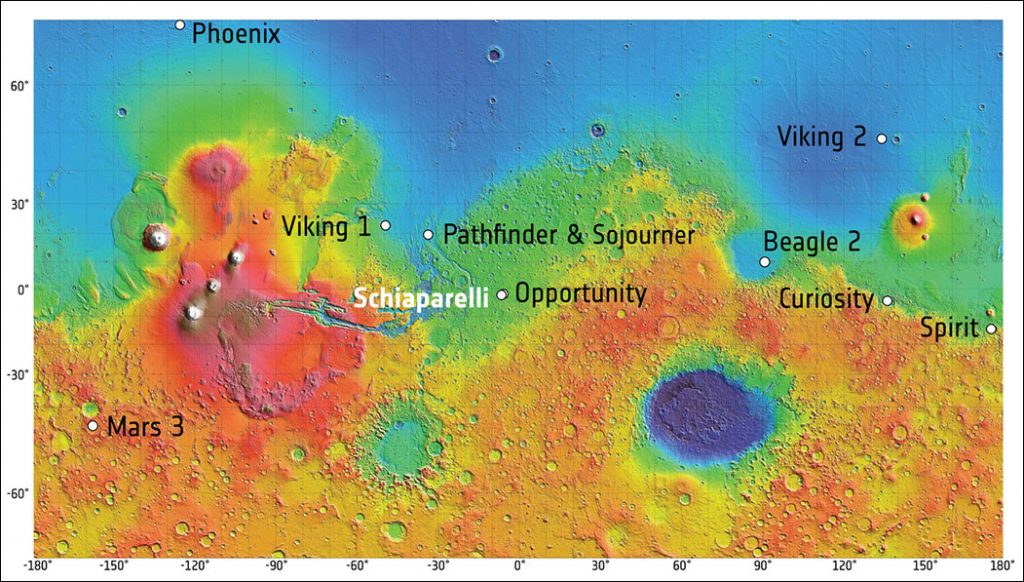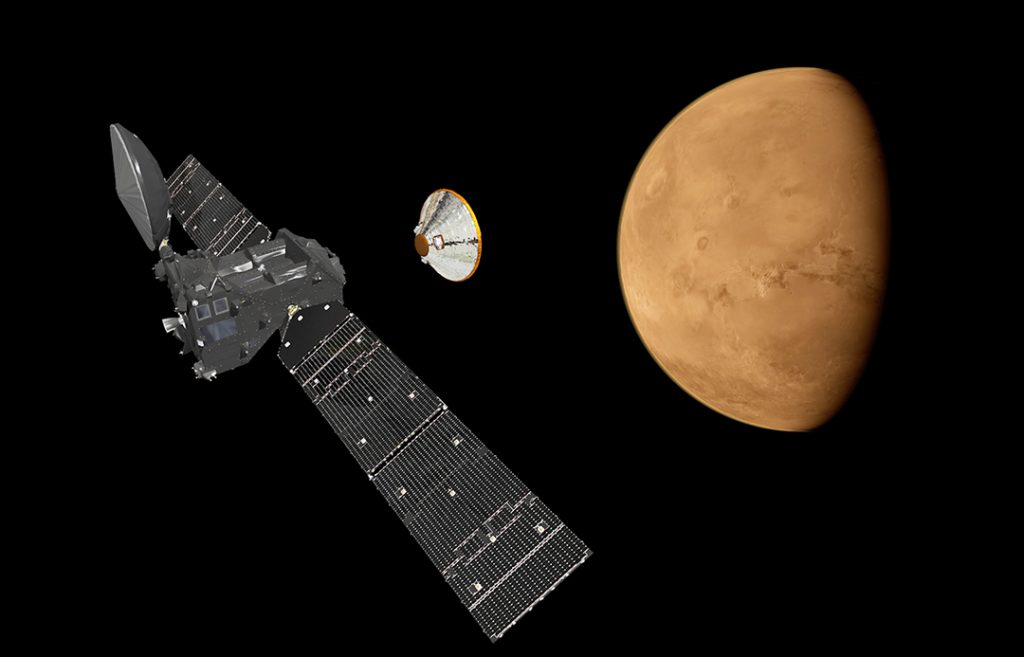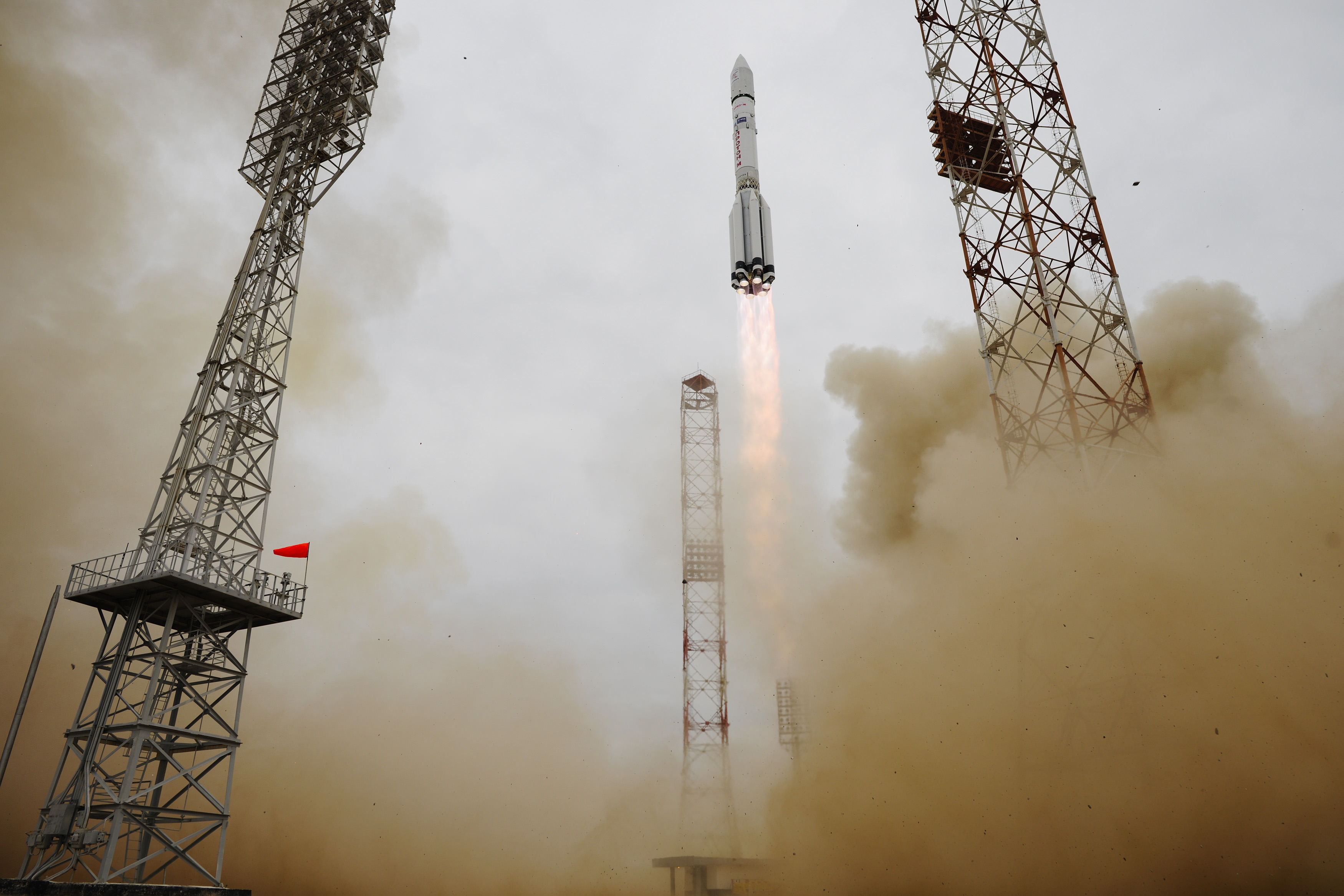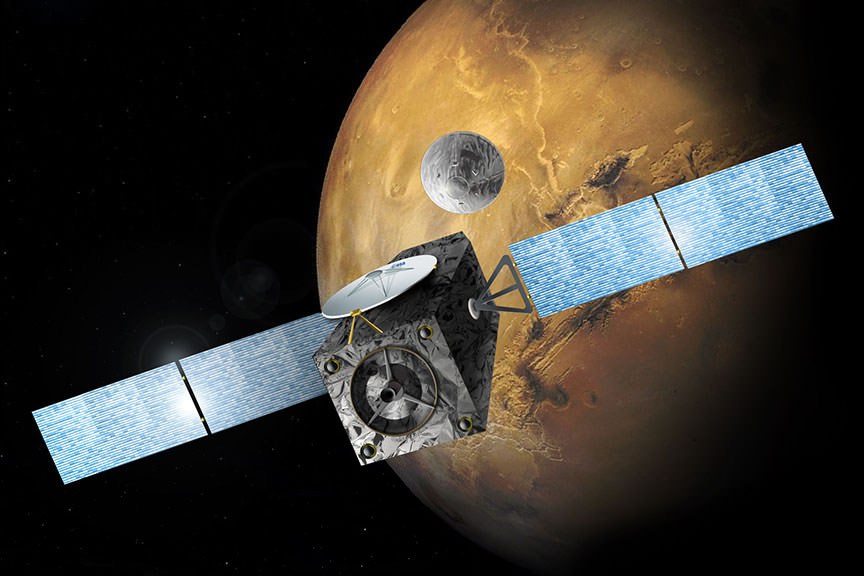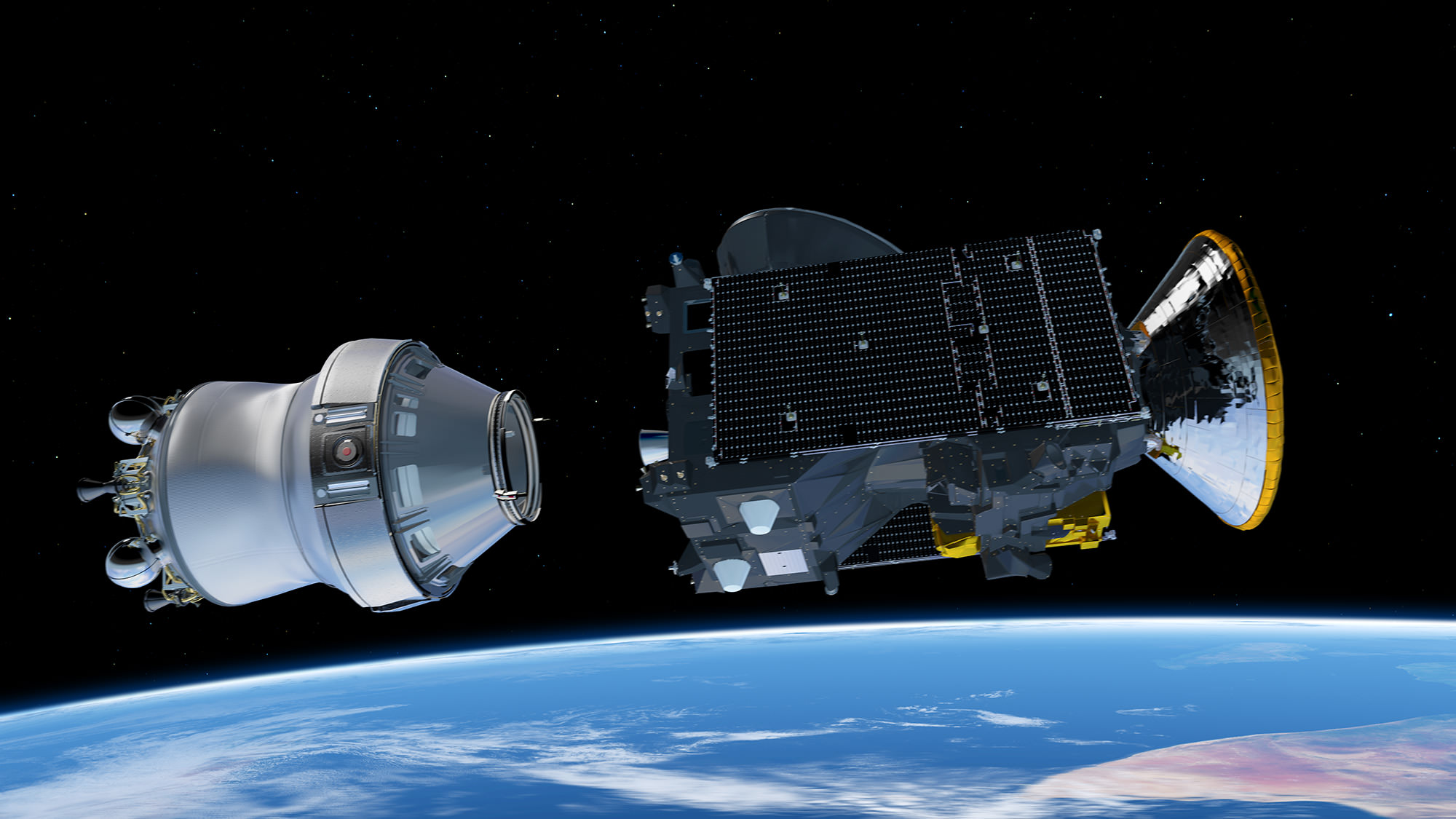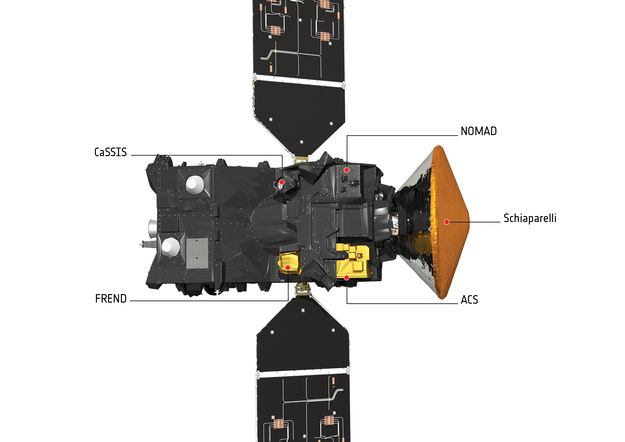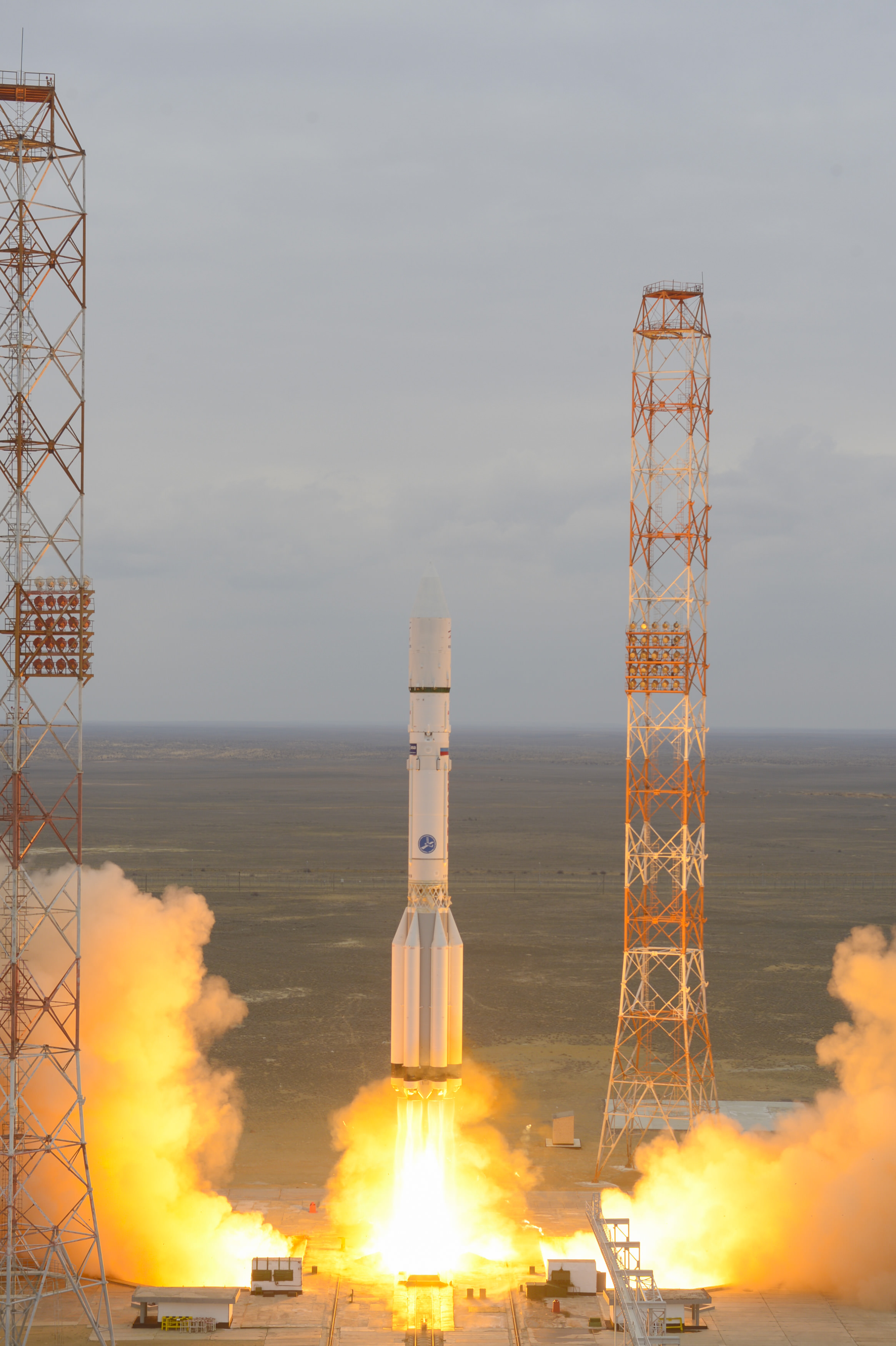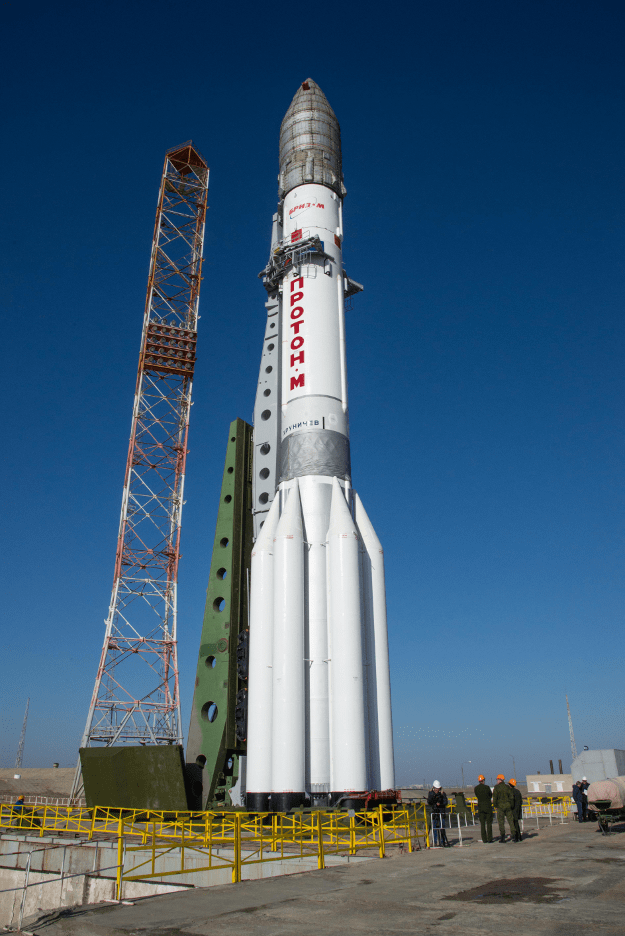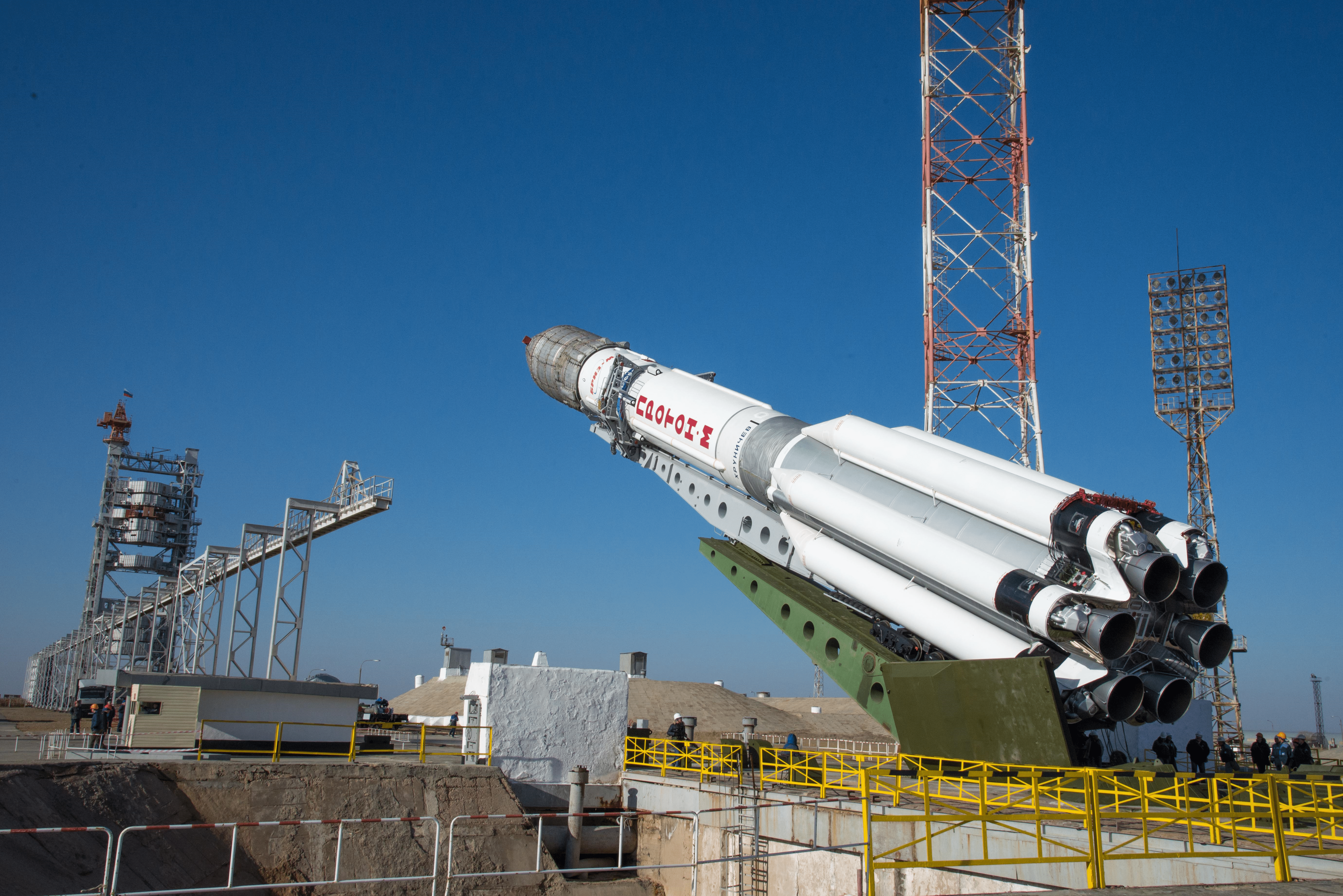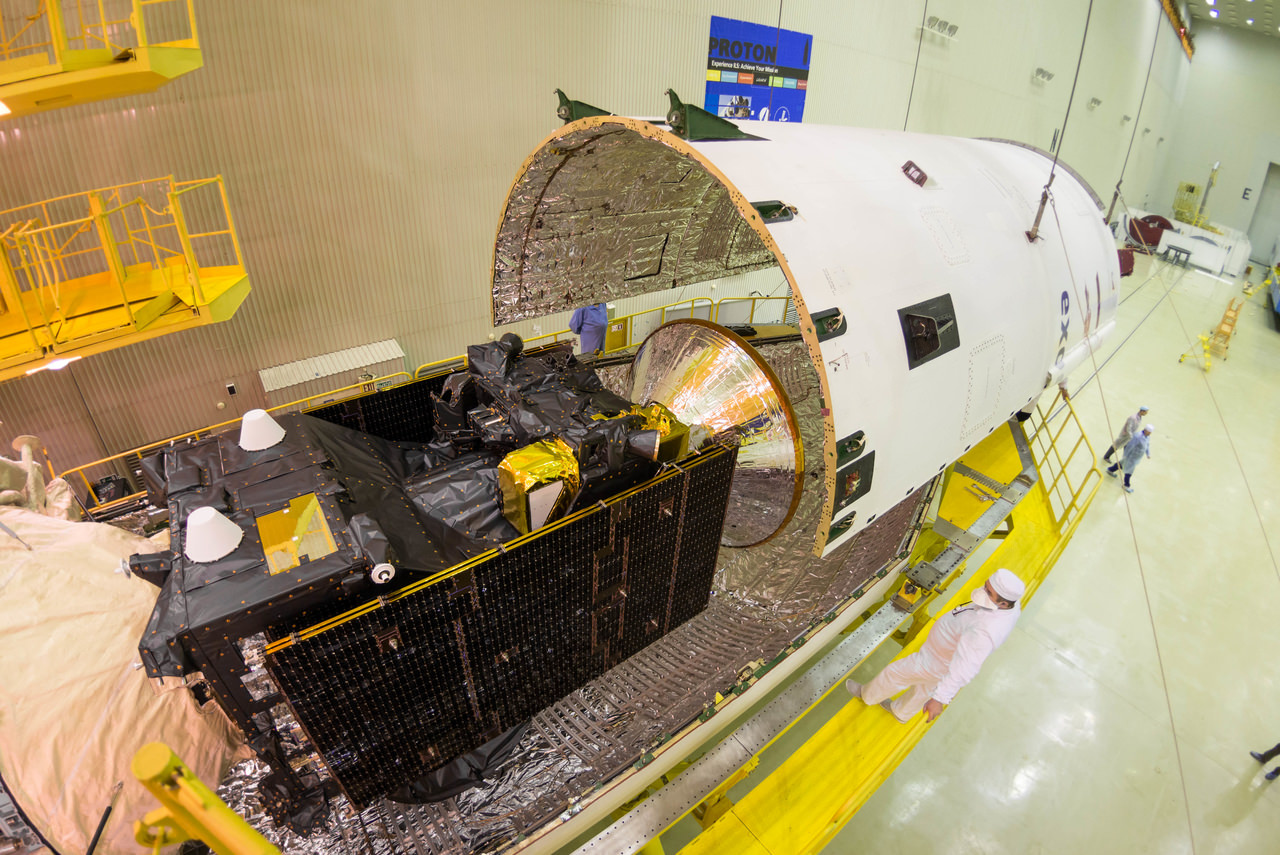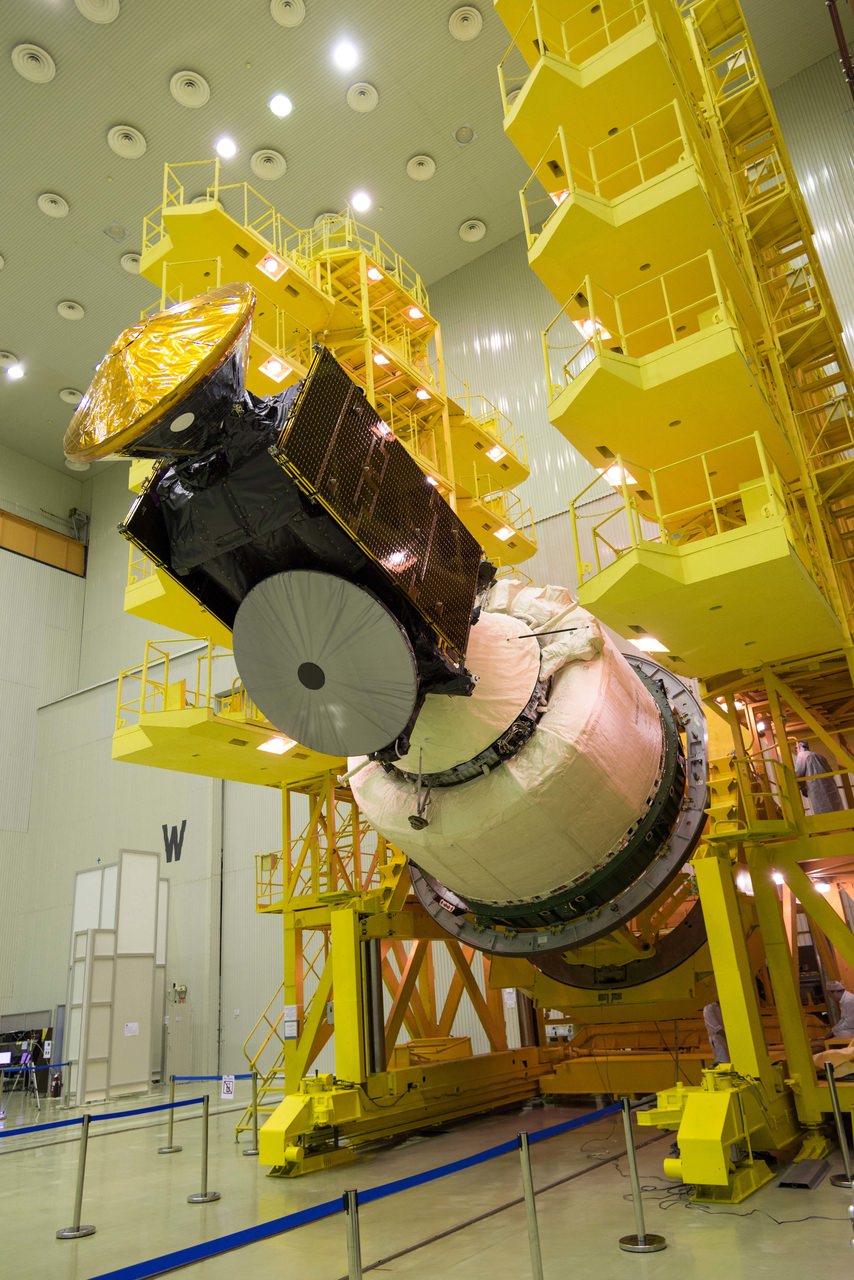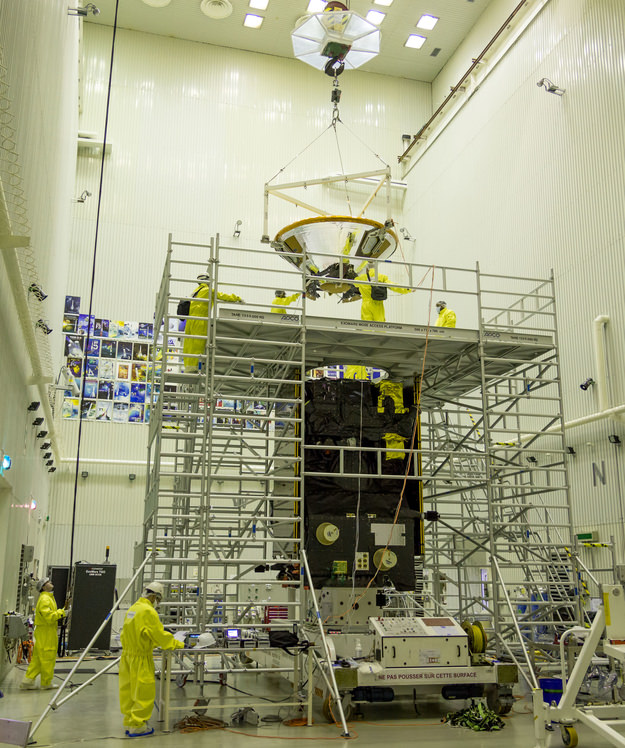
What’s the most powerful telescope for observing Mars? A telephoto lens on the HiRise camera on the Mars Reconnaissance Orbiter that can resolve features as small as 3 feet (1-meter) across. NASA used that camera to provide new details of the scene near the Martian equator where Europe’s Schiaparelli test lander crashed to the surface last week.
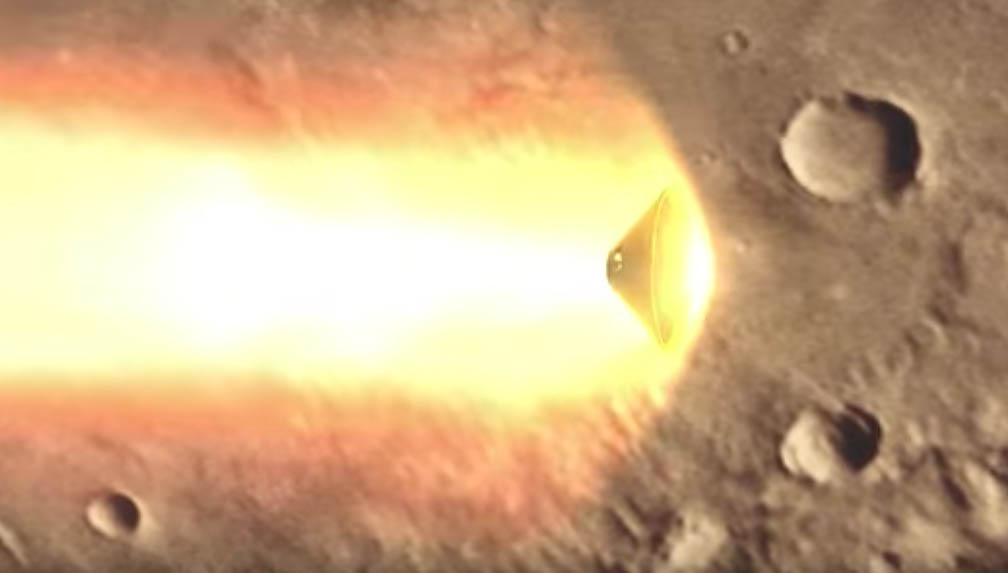
During an October 25 imaging run HiRise photographed three locations where hardware from the lander hit the ground all within about 0.9 mile (1.5 kilometers) of each other. The dark crater in the photo above is what you’d expect if a 660-pound object (lander) slammed into dry soil at more than 180 miles an hour (300 km/h). The crater’s about a foot and a half (half a meter) deep and haloed by dark rays of fresh Martian soil excavated by the impact.
But what about that long dark arc northeast of the crater? Could it have been created by a piece of hardware jettisoned when Schiaparelli’s propellant tank exploded? The rays are curious too. The European Space Agency says that the lander fell almost vertically when the thrusters cut out, yet the asymmetrical nature of the streaks — much longer to the west than east — would seem to indicate an oblique impact. It’s possible, according to the agency, that the hydrazine propellant tanks in the module exploded preferentially in one direction upon impact, throwing debris from the planet’s surface in the direction of the blast, but more analysis is needed. Additional white pixels in the image could be lander pieces or just noise.
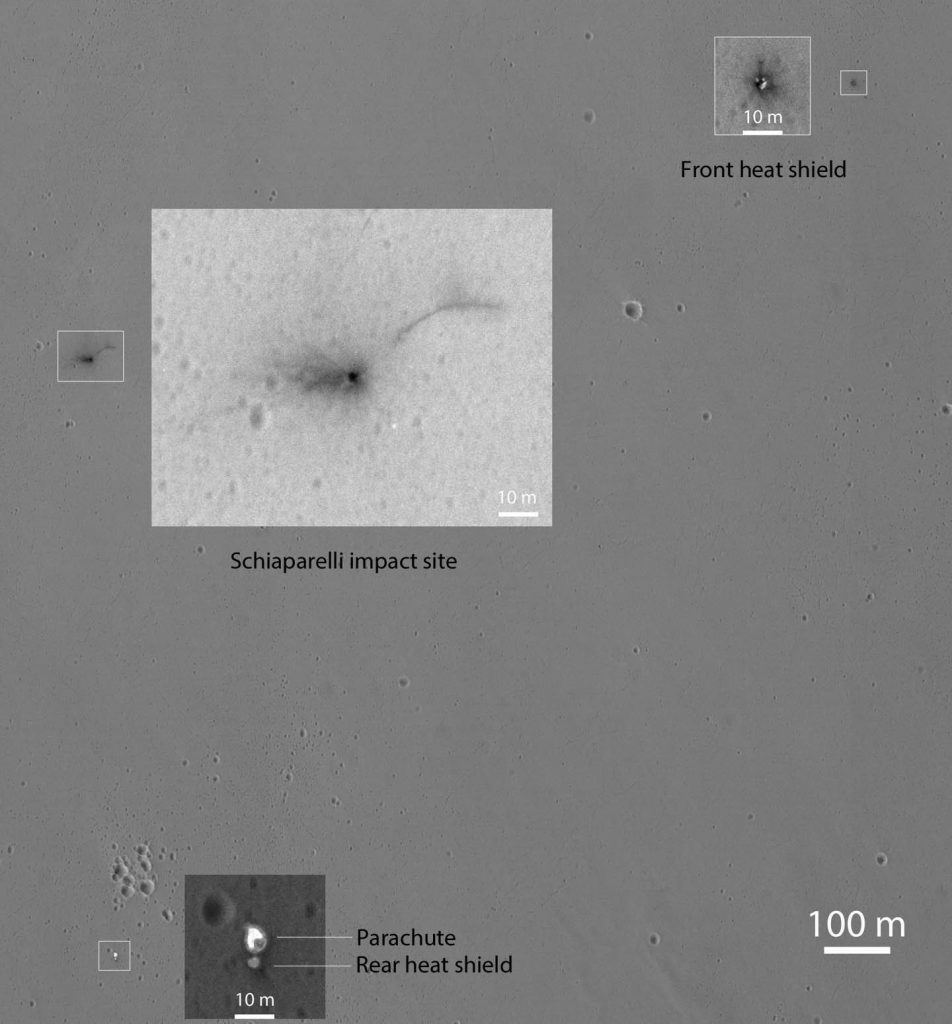
In the wider shot, several other pieces of lander-related flotsam are visible. About 0.8 mile (1.4 km) eastward, you can see the tiny crater dug out when the heat shield smacked the ground. Several bright spots might be pieces of its shiny insulation. About 0.6 mile (0.9 kilometer) south of the lander impact site, two features side-by-side are thought to be the spacecraft’s parachute and the back shell. NASA plans additional images to be taken from different angle to help better interpret what we see.
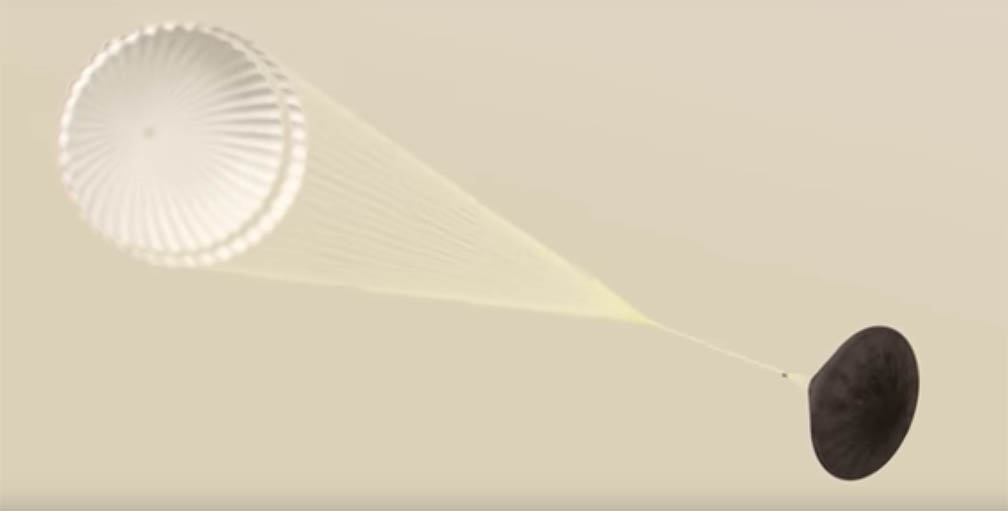
The test lander is part of the European Space Agency’s ExoMars 2016 mission, which placed the Trace Gas Orbiter into orbit around Mars on Oct. 19. The orbiter will investigate the atmosphere and surface of Mars in search of organic molecules and provide relay communications capability for landers and rovers on Mars. Science studies won’t begin until the spacecraft trims its orbit to a 248-mile-high circle through aerobraking, which is expected to take about 13 months.
Everything started out well with Schiaparelli, which successfully transmitted data back to Earth during its descent through the atmosphere, the reason we know that the heat shield separated and the parachute deployed as planned. Unfortunately, the chute and its protective back shell ejected ahead of time followed by a premature firing of the thrusters. And instead of burning for the planned 30 seconds, the rockets shut off after only 3. Why? Scientists believe a software error told the lander it was much closer to the ground than it really was, tripping the final landing sequence too early.
Landing on Mars has never been easy. We’ve done flybys, attempted to orbit the planet or land on its surface 44 times. 15 of those have been landing attempts, with 7 successes: Vikings 1 and 2, Mars Pathfinder, the Spirit and Opportunity rovers, the Phoenix Lander and Curiosity rover. We’ll be generous and call it 8 if you count the 1971 landing of Mars 3 by the then-Soviet Union. It reached the surface safely but shut down after just 20 seconds.
Mars can be harsh, but it forces us to get smart.
**** Want to learn more about Mars and how to track it across the sky? My new book, Night Sky with the Naked Eye, which will be published on Nov. 8, covers planets, satellites, the aurora and much more. You can pre-order it right now at these online stores. Just click an icon to go to the site of your choice – Amazon, Barnes & Noble or Indiebound. It’s currently available at the first two outlets for a very nice discount.

